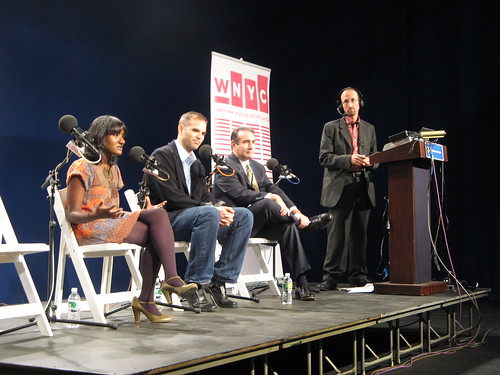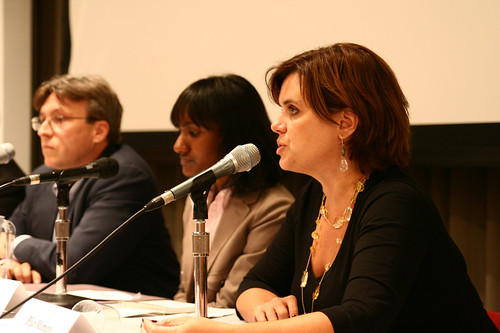There are many points where Senator John McCain’s career and life story intersect with immigrant communities across the US. He was one of the principal sponsors in the US Senate of comprehensive immigration reform, legislation that he subsequently repudiated during the presidential primary campaign. He and his wife Cindy have an adopted daughter from Bangladesh. He comes from a state with a large Latino population. During the Vietnam War he was held prisoner by the North Vietnamese government, and later became a strong advocate for normalizing relations between the US and Vietnam.
Despite these points of contact, ethnic media journalists say McCain has a long way to go in cementing support among immigrant voters.
“The McCain campaign is using double-speak,” said Pilar Marrero, a reporter with the Spanish-language newspaper La Opinion in Los Angeles. “To the mainstream they are going to the base with a lot of red meat. To Latinos and to the Latino media they are talking a different talk. What they are saying to them is ‘don’t pay attention to the party and the platform.’ The platform that has English-only and, let’s build a wall on the southern border, and lets just kick out all the undocumented workers. ‘Pay attention to the man, the man who pushed immigration reform. Pay attention to him because in his heart he still believes in immigration reform and he’ll still support it. He loves Latinos, he is from Arizona.’”
Marrero spoke at a panel discussion in Minneapolis sponsored by Feet in Two Worlds and the New York Community Media Alliance. The panel was held at the Weisman Art Museum as part of the American Politics Sideshow on the final day of the Republican National Convention in St. Paul.
Marrero said the McCain campaign’s tactics with Latinos did not appear to be working. “There always (are) some Latinos that vote Republican,” she said. “As far as getting to that 35 or 40 per cent that (the Republicans) know they need to win certain states, that’s yet to be seen.”
Wameng Moua, the editor of Hmong Today , a newspaper that serves Minnesota’s large Hmong community, said McCain had made a connection with older Hmong voters. “John McCain has an historical tie to the Hmong community in the sense that the Americans in the Vietnam War recruited the Hmong to save fighter pilots who were shot down in Laos. Unfortunately John McCain was shot down in Vietnam, so he wasn’t able to be saved by Hmong people. But nonetheless there still is that historical connection.”
Moua noted that even younger Hmong voters were taking a look at McCain after the Democratic National Convention in Denver. “There was a lot of excitement about the Obama campaign at first. But now, talking to a lot of my friends, they seem to have a second thought on the premise that they really weren’t riveted by Obama’s speech (at the convention).” But Moua also said there are two Hmong members of the Minnesota state legislature from St. Paul. Both are Democrats, and both are expected to support Barack Obama.
Obama and McCain were faulted for their lack of outreach to immigrant communities by Ka Chan, communications director of the New York Community Media Alliance. Chan said that the candidate who had done the most to connect with immigrants was Hillary Clinton. “It’s not surprising,” Chan said, “because Hillary has so many ties with so many ethnic community groups.”
As to McCain, Chan added, “(he) could have been a front runner or the maverick, as he calls himself, in immigration reform, but he did not. There is speculation that he needed to win the primary, that’s why he distanced himself from what he stands for in immigration reform. Just like his war hero image, he could have been an immigration reform hero for all these immigrant voters. But these days we don’t really hear that rhetoric anymore, ever since he entered the direct race with Obama. The effort still needs to be seen.”






